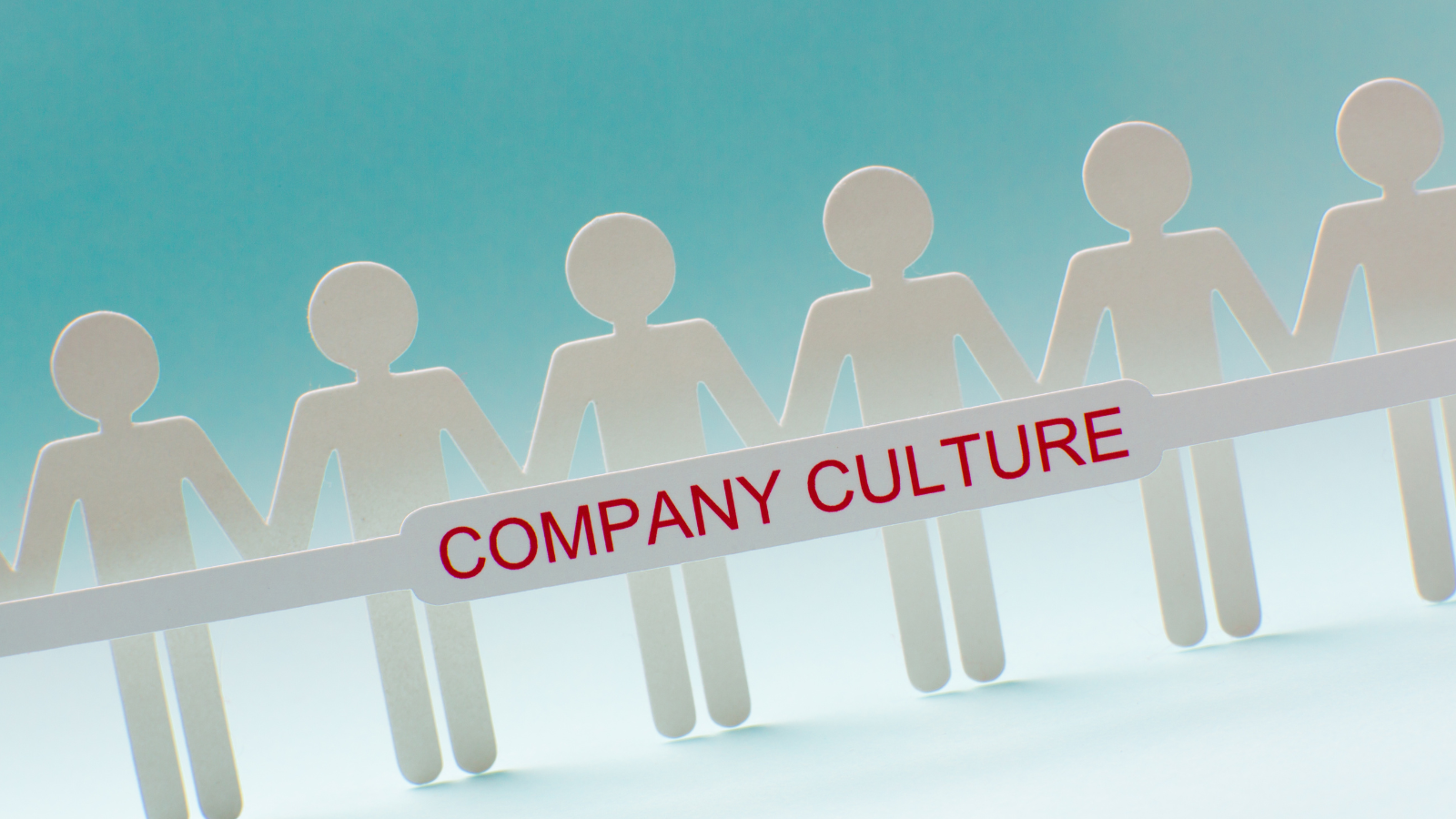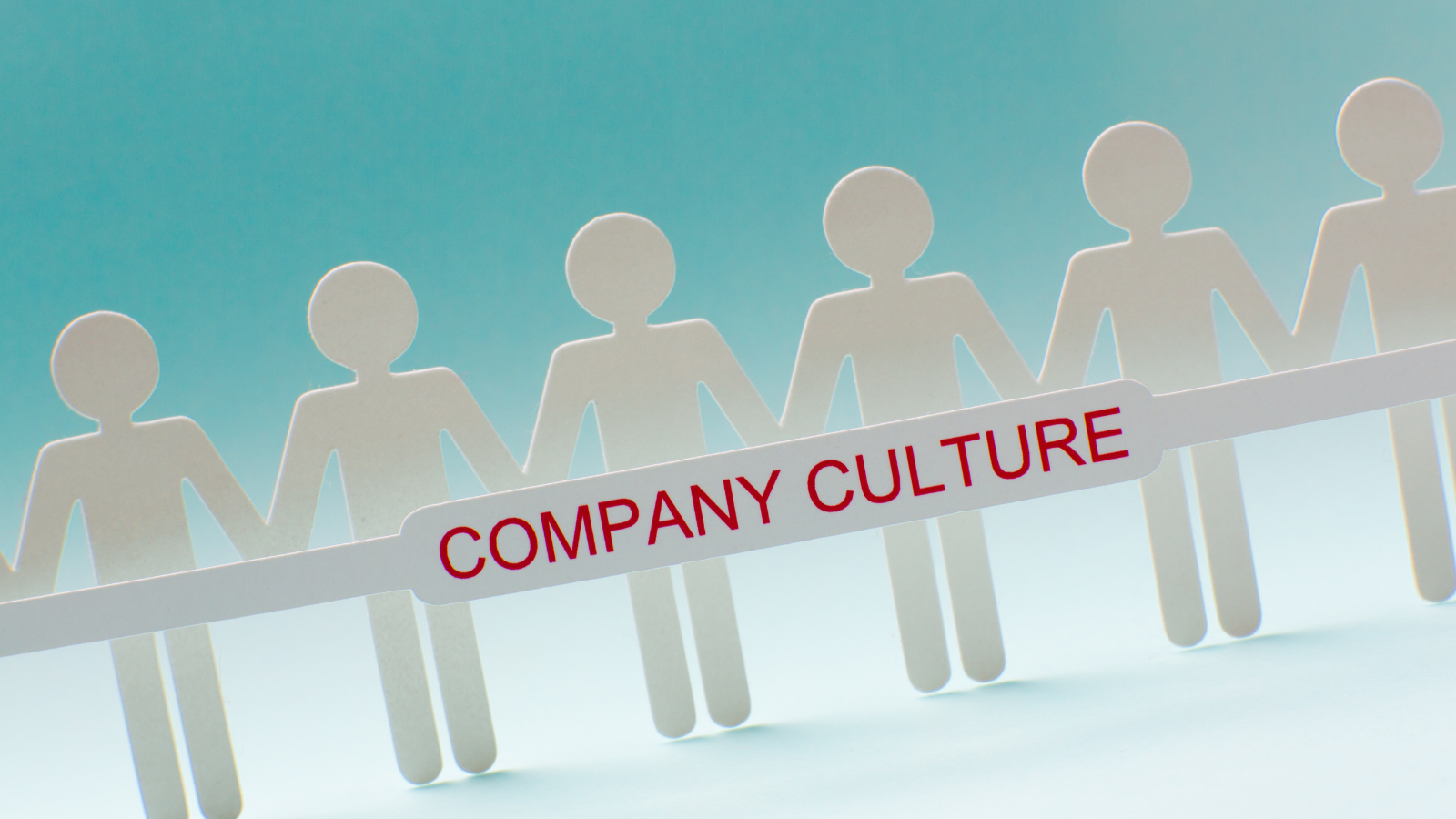
Everyone wants a strong company culture. It’s the foundation of your business, and when it’s strong, it drives your employees to do their best work, helps you attract the right talent, and gives your customers a reason to choose you over all the other options out there.
But how do you make it all happen?
This guide will help you understand what company culture really is and how it affects employee engagement. We’ll also help you spot symptoms of a culture problem and give you the strategies you need to make improvements.
What is Company Culture?
Company culture is defined as a shared set of values, goals, attitudes, and practices that make up an organization. Essentially, your company culture is how you do things there. It’s the personality of the organization.
Another way to think of it is like this: if your employees were asked by their friends and family to describe what it is like to work there, what would they say? Their responses essentially define your company culture.
Why Is It Important to Have a Strong Company Culture?
The culture of your company is the most important factor in determining success. A good culture will attract great employees and make it easier to build a strong bench of new talent. It also impacts how well you do financially, and it helps you retain your employees. A happy employee is more productive, makes fewer mistakes, and is less likely to leave the company.
Let’s dig into these concepts, starting with recruitment and the universal desire to attract top talent. The best candidates are in and out of the job market within ten days, according to The Undercover Recruiter, so if you're not hiring them first, you're missing out on your chance to land the best people.
Your company culture, or employer brand, can be your greatest appeal. Glassdoor reports that 77% of candidates consider a company’s culture before applying for a job, and 56% of candidates said company culture is more important than salary when it relates to job satisfaction. Now more than ever, people want to work somewhere that feels purposeful and gives them a sense of meaning. Companies that invest in employer branding to effectively communicate who they are and how they make a positive impact are three times more likely to make better hires. Getting their good name out there pays off!
And, of course, having a strong company culture will make your current employees happier and more productive – and happy employees don’t leave.
A recent Gallup poll found that 75% of employees who were actively disengaged were either thinking about leaving or were planning to leave within 12 months. Only 7% of actively engaged employees said they were planning on leaving their jobs within 12 months—and nearly three-quarters (73%) planned on staying with their employer for at least two years or longer. Companies save time and money by retaining their people and avoiding the ongoing need to fill positions and then onboard and train new hires.
What does a bad company culture look like?
The difference between a company with a strong culture and one that’s struggling is vast. A bad company culture is toxic and unproductive. It can lead to high turnover, low productivity, and poor performance. Here are the top 10 symptoms we see in companies with poor cultures:
1. High employee turnover. Talented people don’t want to work in a toxic environment.
2. Identity crisis. Employees complain that the company’s core values don't align with what it's really like to work there.
3. Drama. Office gossip and unwanted cliques fester and divide the workforce.
4. Missing persons. Employees are absent more often than those at competitor companies and even those physically showing up for work end up "Quiet Quitting."
5. Lack of recognition. Employees report that their hard work often goes unnoticed and believe others are rewarded more than they should be.
6. Stalemate. Communication between departments is lacking or nonexistent, which leads to mistakes, redundancies, and lower-quality work.
7. Energy crisis. A lack of enthusiasm and motivation brings down the energy of an entire group and can become contagious, stymieing motivation across the board.
8. Power struggles. Conflicts between departments consistently lead to underperformance, unhappiness, and a lack of goal attainment.
9. Round pegs in square holes. Poor recruitment practices lead to less qualified candidates being hired into positions where they struggle because they're not ready for them yet (or never will be).
10. Performance problems. Employees lack an emotional commitment to their job and fail to bring their best to work, which lowers productivity and performance.
How Does Company Culture Affect Employee Engagement?
When company culture is strong, engagement is too; culture and engagement go hand in hand. As the culture improves, employee engagement gets higher.
Let’s take a moment to define engagement. We would say that engaged employees are emotionally committed and willing to give their best at work. As a result, they fully activate their talents and give their work all they've got, which means that they're putting in more effort, working harder, and taking on extra responsibilities. It also means that they're more willing to go above and beyond, and they have a positive attitude toward their work and colleagues.
In short, a strong culture makes for engaged employees, and engaged employees make your company better!
Why is it important that employees are engaged?
Let’s think of employee engagement in terms of your company campfire. Imagine all of your employees gathered around your company campfire… what would that look like?
Your engaged employees are the ones tending to the fire. They’re adding logs, stoking the fire, and working to ensure it is always burning bright.
Those who are not engaged are sitting back with their feet kicked up, enjoying time with coworkers, and feeling content to let others make it happen.
Your disengaged employees are removing logs from the fire, frequently dousing the flames, and making everyone else feel a little less happy to be there.
According to the latest Gallup data, here’s what the average U.S. company’s campfire looks like:
- 32% of employees are tending to the fire and ensuring it continues to burn bright.
- Over 50% sit back with their feet kicked up, content to let others do the work.
- 18% are removing logs, dousing the flames, and making everyone else less happy.
If you want more people gathered around and feeling excited about maintaining a roaring campfire, you need to create a culture that engages them.
The good news is that there are ways to increase engagement on your team, and this guide will walk you through the steps you can take to create a culture where people feel connected to one another and committed to their work.
How do companies improve their culture and elevate engagement?
A thriving company culture supports shared values and goals, people development, open communication channels between departments, trustworthiness among leaders and employees alike, and an overall sense of belonging within the team.
Organizations with the best cultures focus on the Four Engagement Elevators:
- Shared Mission: employees have a clear sense of where they’re going as a company and why they’re working so hard to get there.
- People Development: leaders demonstrate genuine caring for their people and are invested in their growth.
- Valued Voice: There is strong two-way communication between departments, and because people value the input of others, employees feel comfortable sharing their opinions.
- Earned Trust: An overall environment of transparency gives employees confidence in company decisions and faith in the integrity of their leaders.
These four Engagement Elevators are an essential part of building and maintaining a healthy, productive workforce.
Common obstacles that stand in the way of a strong company culture
While a strong culture can be a huge asset, it's also hard to build—and even harder to maintain. It's not enough to simply aim for a great company culture. It won’t just fall into place. Instead, you have to actively work on improving your company culture every day. Here are some common obstacles that often stand in the way of company culture:
1. It can be difficult to know what your culture actually is. Like an untended garden, a culture will develop even without intention, but it won’t be the culture you necessarily want. It’s important that company leaders clearly identify their mission, vision, values, and expectations and then communicate that consistently in both their words and their behaviors.
2. Lip service. It’s easy for leaders to talk about the importance of culture and employee engagement, but if they’re not doing the work (all the time), it will feel false and have a negative effect on employees. Leaders must do what they say they will do and prioritize people in their daily actions.
3. A lack of what many call “psychological safety” can create an insurmountable obstacle. People need to know they can bring their whole selves to work, give feedback, share input, and do their jobs without fear of judgment or negative repercussions. During any culture initiative, it’s important that people can be vulnerable, share mistakes, and ask for help.
4. Silos can prevent effective communication and present a big obstacle to a culture initiative. Barriers erected between teams, departments, or divisions inhibit information sharing and cause employees to become more focused on protecting themselves than providing excellent service to others.
5. Communication breakdowns are also a problem. They frequently occur when leaders feel strapped for time and fail to give employees the information they want or need. Strong communication is necessary for culture improvement, and it’s about more than just disseminating information. It also means ensuring that the message resonates with employees in a way that moves them to action!
6. Command and Control can be major roadblocks as well. Ideally, organizations hire talented and capable people they can trust. This allows company leaders to give employees the autonomy they need to do their work. Lack of freedom and feeling of mistrust squelch their capacity to thrive.
7. People need more recognition than we usually realize. Recognition is a driving force of motivation for humans, and when it is absent, employees feel unimportant, less motivated, and eventually resentful. This kind of void can stifle a culture renovation.
8. Finally, an overall feeling of reluctance to change can be an enormous inhibitor. The only way a culture renovation can be successful is if leaders are open to, and even excited about, change. Leaders who lack flexibility and are averse to change prevent long-term success.
How do you know if your culture is good and your people are engaged?
For more than 70 years, Gallup has studied employee engagement. Their research has shown that it's one of the most important factors in determining how productive a company is and how much revenue it generates. So, it’s smart to periodically stop and consider whether you’re on track.
There are a few different ways to figure out how engaged your people are:
1. The good news is that you can measure employee engagement—and it's easier than you think! Use a world-class engagement survey to get the full picture of how engaged your employees are. Whether you're aware of it or not, every employee has an opinion about what your company's culture is like. It's better to know what those opinions are than to allow your employer brand to erode and your top performers to leave. Start with a baseline survey to capture the total engagement score and understand your current performance in the Four Engagement Elevators. Build strategies around your areas of improvement, then repeat the survey annually.
2. Also, look at your overall company performance: When a company has a strong culture, they generate five times – or 500% - more revenue! A recent Gallup study shows that companies with high levels of employee engagement have 3x higher revenue growth than those with low levels (49% vs. 16%). If you want to bring in more revenue, you need to start by improving employee engagement!
3. Look at your recruitment efforts. Do you have a strong talent bench and a large number of applicants? Companies with a strong culture are targeted by 94% of job seekers!
4. Consider employee absenteeism. Are your employees taking an inordinate number of days off? Are they often arriving late or leaving early? According to Gallup, organizations with a high level of engaged employees see 81% less employee absenteeism.
5. Finally, measure your customer retention. There is a strong connection between employee engagement and customer retention. Companies with strong engagement have 63% lower customer loss rates, and customers working with engaged employees bring in 37% more revenue than other customers (Gallup).
How can you improve your company culture?
In the end, company culture is what you make of it. But if you want to build a better one, there are some things you can do:
1. Identify your purpose, sometimes called a “reason for being,” which points to the reason why it exists. This is important because if you don't know what your purpose is, how can you expect your employees to feel connected to it? It's usually a combination of its mission and vision statements, which should be written down and easily accessible to everyone in the organization.
2. Identify and define your Core Values. These values should define how employees will treat each other and your customers, and they should serve as the rules of the game for success at your organization. Behaviors that align with your core values should be recognized and celebrated, while those that don’t should never be tolerated. Knowing what you value as an organization will also help you to determine whether your job candidates are a good culture fit.
3. Hire for Talent and Culture Fit, not experience. If someone has all the experience in the world but doesn't fit with what you're trying to build there, they won't be able to contribute in a meaningful way, and they won't be happy in their work. Make sure you have a clear understanding of their innate strengths for the role as well as their fit with the company, the team, the manager, and the work they will be doing.
4. Conduct Growth Guides for each of your employees. This allows you to have a clear understanding of their goals, what motivates them, and how you can support them in their growth. This will demonstrate that you care about and are invested in your people while also allowing you to understand better their goals, their motivators, and what they need from you to achieve success.
5. Give employees effective feedback. Point out exactly what they are doing right so they can do more of it, and let them know what they can do differently in the future to achieve even greater success.
6. Encourage every employee to build their own personal User Guide. Have them share it company-wide so everyone can better understand the people they work with. These guides will allow people to share their work styles, tell them how they prefer to communicate and speak to what drives them nuts!
7. Insist on open and honest two-way communication throughout your organization. Leaders should increase their level of transparency, allowing employees better to understand the big picture and the reasoning behind decisions. They should also seek ideas and input from their people so employees feel valued and heard.
Up Your Culture!
Brian Halligan, the CEO of HubSpot, once said, “ The way I think about culture is that modern humans have radically changed the way that they work and the way that they live. Companies need to change the way they manage and lead to match the way that modern humans actually want to work and live. We’re trying to re-craft culture in a way that really matches that. I think that 99% of companies are kind of struck in the ’90s when it comes to their culture."
This is the perfect time to strengthen the foundation of your business and your culture and drive your employees to show up each day with their sleeves rolled up and feel passionate about the work that they do.














Leave a Comment